Home > Blog > Garden Fence Ideas to Keep Animals Out: Effective Fence Designs for Keeping Wildlife at Bay
-
 Liu
Hi there! Welcome to my shop. Let me know if you have any questions.
Liu
Hi there! Welcome to my shop. Let me know if you have any questions.
Your message has exceeded the limit.

Garden Fence Ideas to Keep Animals Out: Effective Fence Designs for Keeping Wildlife at Bay
2025-09-29 17:44:43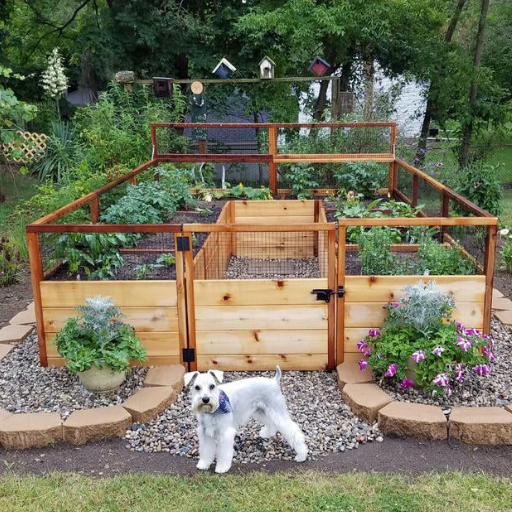
Gardening can be joyful and rewarding, but it often brings its share of challenges, one of the main ones being uninvited animal guests. Deer might be nibbling on your plants, rabbits digging up the soil, or raccoons raiding the vegetable patch. Wildlife can be a dreaded nuisance for even the most seriously planned garden. These are just a few cases to consider when planning bright and functional fencing for the garden. This article explores various practical and creative ways to fence in your hard-won gardens without detracting from the beauty of the outdoor setting. The choices for different garden fences will be discussed, from sturdy barriers to the more aesthetic solutions, so you'll have whatever you need to keep unwanted visitors out.
Understanding the Need for a Garden Fence

A garden fence is installed to protect your plants and vegetables from either animals, for instance, or pesky weather. It usually serves as a barrier to prevent wildlife, such as deer or rabbits, or even intruders, from destroying your hard labor. It also serves to separate an area of the garden, which gives the garden a more organized perspective. In short, you can keep a garden safe by having the right fence while also enhancing its beauty.
Common Garden Pests and Their Impact
Gardening is an enjoyable pastime for most; however, part of the never-ending battle that gardeners have to contend with is the pest menace. Pests can inflict irreparable damage to plants, at least slowing down their development or completely killing them. A basic understanding of common garden pests and their effects would enable the gardener to plan truly effective control measures. Some of these pests include:
Aphids
Aphids are tiny insects that suck sap from plants. They usually sit on new shoots and leaves, draining nutrients. Being on the leaves, they cause curling or yellow discoloration of leaves, along with a sticky residue, which pests call honeydew. This honeydew encourages mold growth.
Slugs and Snails
These mollusks devour leaves with gaping holes and often disturb stems or fruits, particularly in a damp atmosphere. They are especially damaging to tender seedlings or low-growing plants.
Japanese Beetles
These beetles eat foliage, flowers, and fruits of a wide variety of plants. They eat the tissue between the veins in leaves, causing an ugly damage pattern.
Cutworms
Cutworms are caterpillars that feed on young plants at night, often severing stems at the base. This may wreck seedlings before they mature.
Whiteflies
Whiteflies are minute, white, winged insects and congregate on the underside of leaves. Hence, white flies suck the sap of the plants and cause wilting, yellowing, and less growth of the plant. Like aphids, whiteflies secrete honeydew, which may attract other pests or cause fungal infections.
Early identification will enable a reduction in damage caused by these pests, thereby fostering the health and productivity of the garden. Targeted solutions can include intervention by natural predators, organic insecticides, or companion planting to keep the problem under control.
Why Keeping Wildlife Out is Crucial
While wildlife can affect the ecological balance, certain animals entering your garden or property tend to cause problems. Deer, raccoons, rabbits, and birds damage crops, harm plants, and can spread diseases. For instance, some research indicates that deer consume anywhere from 5 to 10 pounds of vegetation each day, resulting in serious losses for both gardeners and farmers. Raccoons will uproot soil and damage sensitive root systems, while birds--such as sparrows and blackbirds--will feed on ripening fruits and grains, cutting your yield short.
In addition to damaging crops, some animals are carriers of diseases that can affect humans and domestic animals. Raccoons can carry rabies, while rodents can spread leptospirosis and hantavirus. More than 20,000 cases of rodent-associated illnesses are reported annually in the United States, according to the Centers for Disease Control and Prevention (CDC). Protecting your area with appropriate fencing, repellents, and other wildlife deterrents can reduce these risks and assure a more productive and secure environment.
By humanely and ecologically excluding wildlife, you effectively protect your garden and establish a buffer zone that allows wildlife to thrive in their natural environments without conflict.
Benefits of Installing a Garden Fence
Protection from Pests & Wildlife
Essentially, a garden fence isolates pests and wildlife such as rabbits, deer, and raccoons from entering your garden to feast on plants and crops. It is estimated that wildlife damages agricultural lands, amounting to billions of dollars annually in America. The National Wildlife Research Center released this information.
Privacy Enhancement
A garden fence installation yields some privacy for the secluded, peaceful ambience essential for undertaking gardening or relaxation. It marks your space and discourages the visibility of neighbors from your si,te ensuring a pleasurable outdoor experience.
Increased Safety for Pets and Children
The garden fence is a line of demarcation, namely, a safety wall keeping pets and children within a designated territory from stepping into other territories that might be dangerous; for instance, roads or adjacent yards. This is utmost wonderful for houses with active pets or toddlers.
Support for Climbing Plants
One use of a garden fence is to support climbing plants, from beans and roses to ivies. Vertical gardening allows you to maximize your garden space and enhance aesthetics with a burst of color and greenery that climbs up the fence.
Added Value to a Property and Curb Appeal
A garden fence really goes a long way in making the property more colorful and enhancing its curb appeal. According to studies, up to 20 percent might be added to the property value if investment had been made in home landscaping, which definitely includes quality fencing, so it will end up being a wise investment for any homeowner.
Types of Fences for Animal Proofing
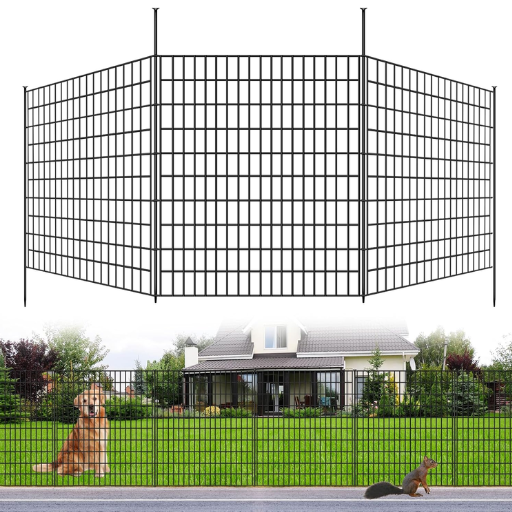
Fence Type | Key Features | Best For | Considerations |
|---|---|---|---|
Wooden Fence | Durable, aesthetic, customizable | Gardens, small animals | Susceptible to decay, requires upkeep |
Chain-Link Fence | Strong, affordable, easy to install | General animal proofing | May not deter burrowing animals |
Barbed Wire Fence | Effective for large animals | Livestock, rural areas | Can harm wildlife, needs visibility |
Electric Fence | Low voltage shock, psychological barrier | Deer, predators | Requires maintenance, power source |
Woven Wire Fence | Flexible, strong, small openings | Small animals, gardens | May need additional height for deer |
Hardware Mesh | Fine mesh, prevents burrowing | Rabbits, moles, voles | Expensive, bury 6-12 inches underground |
Stainless Steel Net | Rust-resistant, long-lasting | Zoos, aviaries, high-security | High cost, professional installation |
Exclusion Fence | Targets specific areas | Gardens, chicken coops | Limited coverage, may need electric add-ons |
Wildlife-Friendly | Smooth wires, visible markers | Wildlife migration areas | Balances safety and animal movement |
Netting | Covers top areas, lightweight | Birds, climbing animals | Not suitable for large animals |
Traditional Wooden Fences
A truly classic choice in garden and property animal proofing remains the traditional wooden fence. These wood fences are typically built using varieties such as cedar, pine, or redwood, all of which are naturally resistant to decay and insect attack.
One of the most essential benefits of traditional wooden fences is that they form a very tight barrier against animals such as deer, rabbits, and stray pets. It is therefore imperative that wooden fences be installed appropriately so that there are no gaps at the base or between panels, as animals smaller than 4 inches in diameter may squeeze through. Railing fences can also be constructed at a height of 6 to 8 feet to discourage larger animals, such as deer, from jumping over.
According to recent survey data, well-maintained wooden fences can last anywhere from 15 to 20 years, depending on the quality of the wood and the local climate. Cost-wise, wooden fences generally range from $15 to $45 per linear foot, including both materials and installation, offering a convenient alternative for many homeowners. Treatments such as staining or sealing will significantly prolong their life by keeping them protected from weathering.
For further advanced animal proofing, a wooden fence could be combined with the stamped wire mesh, which provides good protection from burrowing or climbing animals. Being one of the most versatile and reliable fence systems available, wooden fences are the perfect option for garden and property protection.
Metal Garden Fences
Since metal garden fences are generally considered durable, secure, and versatile, they are the preferred choice for homeowners seeking long-term protection for their property. Typically, fences of this style are made from aluminum, steel, or wrought iron, with each material offering distinct benefits. Aluminum fencing, according to recent market trends, is known for being lightweight and rust-resistant, making it a preferred choice in wet or rainy regions. Steel fences serve as a heavy option through increased security and the ability to endure heavy abuse and wear. Wrought iron is heavier yet slightly costlier but brings a decorative design that adorns gardens with time.
According to a 2023 Statista report, the global demand for metal fences has seen a steady increase, worth billions of dollars annually, due to their widespread application in various industries, including residential, commercial, and industrial environments. Metal fences are also typically installed with high-tech features, such as automatic gates and security systems. Moreover, there is an increase in powder-coated finishes for metal among homeowners, as they offer extended weather resistance and a longer lifespan while requiring less maintenance. Sometimes, these metal fences may be combined with mesh panels or decorative elements by gardeners, offering style plus function.
Mesh and Wire Fences
Key Point | Details |
|---|---|
Types | Chain-link, Woven, Welded, Expanded Metal |
Material | Steel, Galvanized, PVC-coated, Stainless Steel |
Durability | Welded and expanded metal are highly durable |
Security | Welded and expanded metal offer high security |
Visibility | Chain-link and welded wire provide clear visibility |
Height | Typically ranges from 3 to 8 feet |
Mesh Size | 0.5 to 4 inches (varies by type and purpose) |
Installation | Easy for welded wire; challenging on uneven terrain |
Maintenance | Low for galvanized or coated materials |
Cost | Chain-link is cost-effective; expanded metal is premium |
Applications | Gardens, security perimeters, animal enclosures, industrial sites |
Customization | Available in gauges, finishes, and coatings |
Privacy | Limited; additional measures like slats may be needed |
Specific Fence Designs for Common Animals
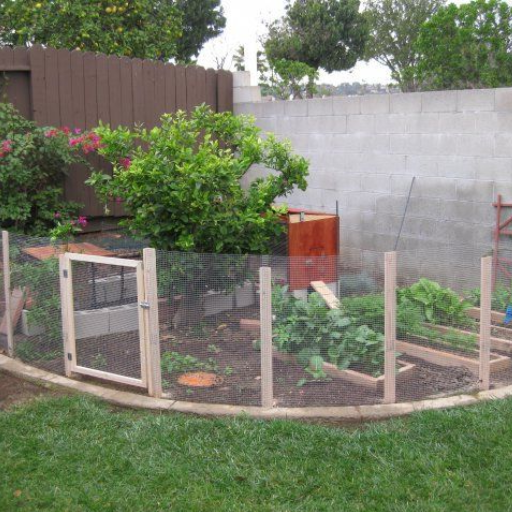
Practicality, durability, and compatibility with specific animal species determine fence construction techniques. Here are some detailed suggestions and insights with fence statistics according to the different animals:
1. Dogs
Fence Height: Four feet suffice for smaller, medium-type dogs, while higher fence heights of at least 6 feet are required for the larger breeds or nimble jumpers.
Materials: Chain link, vinyl, and wood are common choices. These are sturdy and resistant to chewing.
Key Features:
Gates must have locks, lest they give way to escape.
Fence below ground for 6-12 inches where conservative thinkers dig. A concrete base works perfectly.
Data Insight: According to pet safety surveys, 30 percent of pet owners prioritize backyard fences over other containment measures.
2. Chickens
Fence Height: Hare-height fences (6 feet) will prevent escapes and keep predators out.
Materials: Galvanized steel or wire mesh with 1 1-inch or less grid top prevents the interlopers from gaining entry. Topless-style fences will protect against predator invasion.
Key Features:
The top has a barrier-netland to preclude any strange visitors from the air.
It will have an apron at the base of the fence to discourage diggers.
Data Insight: Studies have suggested that the mesh-roofed chicken enclosure reduces predation incidents by more than 60%.
3. Cattle
Fence Height: 4-5 feet is standard for most cattle breeds.
Materials: Barbed wire, woven wire, and electric fences are common types; however, high-tensile wire is also quite effective on larger tracts of land.
Key Features:
An extra electrification wire on top for additional containment could be an option.
At a strategic point, wire spacing keeps calves from slipping through.
Data Insight: High-tensile electric fencing is reportedly designed to last 40 years with occasional maintenance.
4. Horses
Fence Height: At least 5 feet, higher for stallions.
Materials: wood, vinyl with mesh wire, or top rails allowed to be seen to reduce collision risk.
Key Features:
Never use barbed wire.
Smooth edges to avoid cuts and scrapes.
Data Insight: Vinyl fencing, though initially more expensive, provides a return on investment given its 20 to 30-year lifespan and low maintenance.
5. Sheep and Goats
Fence Height: Four-foot-high fences are sufficient for most sheep, whereas they should go up to 6 feet for the climbing ability of goats.
Materials: Woven wire fencing is excellent. Electric fencing can be used to train goats to stay inside boundaries.
Key Features:
Small grid size to prevent animals from keeping their heads through the fence.
Reinforce the corners and gates as goats tend to lean or push against the fences.
Data Insight: Electric fencing with woven wire has boosted the success rates of containment to above 90 percent, according to recent studies.
6. Deer
Fence Height: Not less than 8 feet so that it prevents jumping.
Materials: High-tensile wire or mesh fence with small-sized openings, preventing its entry.
Key Features:
Angled and double fences are superb for wildlife barriers.
Electrification can be used to reinforce fences if necessary.
Data Insight: An angled deer fence, slanting outward about 45 degrees, is a proven deterrent of breaches in agricultural areas.
Adapting fence design to the needs of these animals ensures safety, efficiency, and durability, all at a low cost. Always consider the characteristics and risks associated with any type of animal to provide a secure environment.
Deer Fences: Height and Materials
Effective deer fence designs pay particular attention to the height and selection of materials. Deer are good jumpers; many species can leap 8 feet or higher. Therefore, the fences designed to keep away deer should be at least 8 feet in height to prevent goats from entering. For more violent jumpers or areas with elevated deer populations, extending fence heights to 10 feet may provide an additional layer of security.
The choice of material also determines the nature and longevity of the fence and hence its efficiency. Wood, high-tensile woven wire, and polypropylene mesh are commonly used materials for deer fencing. From the perspective of durability, high-tensile woven wire performs well, withstanding the impact of a deer while maintaining its structural integrity over time. The polypropylene mesh, being less sturdy, offers a lightweight and low-cost alternative suitable for temporary or seasonal use. A wood fence would retain a weathered, natural look, enhancing the earnest aesthetic appeal of a property, but requires regular maintenance to prevent weather and animal-induced deterioration.
Some Key Stats and Data:
According to wildlife management experts, a standard deer fence should be at least 8 feet tall to deter most deer species effectively.
Studies conducted by agricultural research institutions have revealed that high-tensile woven wire fences can last 20 to 30 years with proper maintenance.
Although less durable, polypropylene mesh fences may still last between 10 and 15 years and usually cost about 30% less than tensile wire options in most areas.
Angled fences or double-fence designs, with a 3- to 5-foot gap between rows, have proven that they reduce deer breaches by 90%, as deer are reluctant to leap into confined spaces.
Choosing the proper fence height and material options best suited for your environmental and wildlife management scenario will yield a sturdy and sustainable barrier that can effectively restrict injuries caused by deer. First and foremost, review the behaviors of deer populations and the environmental conditions of your locality, followed by the finalization of the fence design.
Rabbit Fences: Effective Solutions
Rabbit fences are necessary to keep gardens, crops, and landscaping from being continuously subject to the depredations of rabbits. These barriers must be designed correctly to prevent rabbits from running under or squeezing through gaps too small for a human being. The top five workable options to implement rabbit fencing include:
Welded Wire Mesh Fencing
Details: Welded wire mesh having openings of 1 inch or less is highly effective in excluding rabbits from an area. Buried 6 to 10 inches below, the bottom edge of the fence stops the rabbit from burrowing.
Data: Studies have shown that welded wire fences, when properly installed, can reduce fence breaches by rabbits by up to 95%.
Electric Fencing
Details: A low-voltage shock is enough to provide effective deterrence to rabbits. The wires closest to the ground should be placed at no more than 4 inches above the base.
Data: Electric fences were said to reduce rabbit activities by around 85% in smaller gardens.
Chicken Wire Fencing
Details: Chicken wire with hole sizes of 1 inch or less will effectively keep out rabbits. The fence should be at least 2.5 feet high and bent outward at the top as additional protection.
Data: Research has indicated that well-maintained chicken wire fences can counter 90% of rabbit attacks.
Buried Barriers
Details: Install a buried fence or barrier in an L-shape under the ground, along with an existing fence, to thwart rabbits that try to dig under.
Data: Buried barriers alone have been reported to thwart over 80% of rabbit breaches.
Plastic Mesh Fencing
Details: UV-protected plastic mesh fencing proves to be a cost-effective option for small gardens and low-traffic areas. Use one with tiny holes and ensure it has a firm anchoring system.
Data: Though less durable than metal options, plastic mesh fences have been found to deter rabbits in 70-75% of the cases where they were tested.
An apt rabbit fencing choice, taking into consideration the specific needs and environmental conditions, will establish a strong barrier defending your plants and property.
Protecting Against Squirrels and Chipmunks
While squirrels and chipmunks may be tiny and seemingly harmless, they can wreak havoc on gardens and yards, ultimately infringing on home structures if unbothered. Digging out bulbs, raiding feeders, and gnawing on wood or plastic can really bother homeowners. Thus, one needs to erect a complex architecture of barriers, repellents, and thoughtful landscaping to keep these pesky creatures away.
Physical Barriers: Mesh or wire-type fencing with openings less than half an inch will effectively keep squirrels and chipmunks out of the garden. Surround the fencing at least halfway (6 inches buried) to prevent digging because chipmunks are diggers themselves and readily exploit weak spots in barriers. Recent studies suggest up to 90% reduction in damage caused in gardens when fencing is reinforced.
Repellents: Organic scent-based repellents, made from hot peppers, garlic, or predator urine, are most effective in keeping squirrels and chipmunks away from the sprayed areas. Capsaicin-based sprays are highly effective, with many users reportedly witnessing as much as 75% deterrence on reapplications.
Distracting: Setting up a squirrel feeder containing their favorite treats — such as sunflower seeds, corn, or just about anything —could be an alternative to diverting their focus from the gardens and plants. Proper placement, away from areas of concern, allows effective control of their disturbance.
Outdoor Maintenance: How simple: keep the yard clean and devoid of any sort of debris that may attract these animals, mulch piles, or fallen fruit! Removal of such food sources diminishes their interest in visiting, and in turn, could help decrease their overall presence.
When used creatively, such strategies create a sustainable system for defending your property from squirrels and chipmunks. Taking advantage of the latest data, coupled with a multiple-layered defense, provides the best opportunity to protect gardens and maintain peaceful co-existence with these agile critters.
Materials for Building an Effective Fence
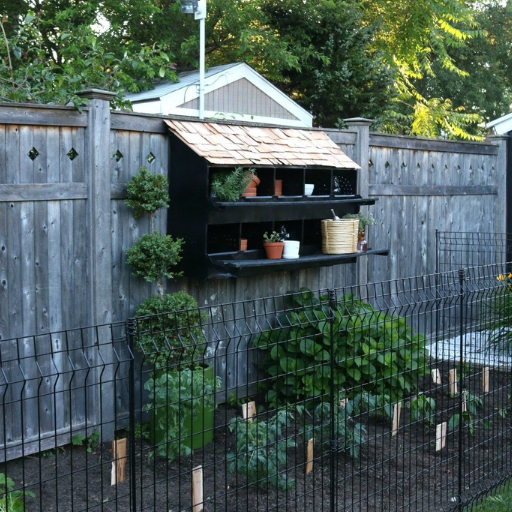
Wooden posts for erecting a hardy frame and providing support for the fence. Perhaps Cedar or treated wood would serve you well.
Wire Mesh-This serves as a solid barrier that keeps unwanted visitors out while allowing visibility and air. Look for a wire mesh with small holes, as chipmunks can slip through larger holes.
Fasteners and Staples-These are necessary for holding the wire mesh to the wooden post so that the fence remains in place over time.
Weather-Resistant Coating or Paint- To sustain the wooden posts against moisture and arrest their deterioration, thereby extending their lifespan.
Fence Gate Materials-This includes hinges, latches, and solid panels for forming an admission route that can be made secure.
Using all these materials together ensures a practical, sturdy, and chipmunk-resistant fence for your property.
Wood vs. Metal: Pros and Cons
Parameter | Wood Fence | Metal Fence |
|---|---|---|
Durability | Prone to decay, weather-sensitive | Long-lasting, weather-resistant |
Maintenance | Requires regular staining/painting | Minimal maintenance needed |
Cost | Lower initial cost | Higher initial cost |
Aesthetic Appeal | Natural, rustic look | Modern, sleek appearance |
Strength | Moderate, can break under pressure | High, withstands strong impacts |
Installation | Easier to install | Requires professional tools/skills |
Environmental Impact | Biodegradable, eco-friendly | Recyclable, less eco-friendly |
Pest Resistance | Vulnerable to termites and pests | Pest-proof |
Customization | Easy to cut and shape | Limited customization options |
Longevity | 10-15 years with care | 20+ years with minimal care |
The Role of Chicken Wire and Mesh
Chicken wire and mesh serve the important purpose of adding protection and functionality to fencing. These versatile materials act as a safety net for animals and maintain the area's integrity. Here are five functions and benefits of chicken wire and mesh:
Animal Containment - Chicken wire and mesh are excellent facilities for keeping small animals, such as chickens, rabbits, or other domestic animals, from wandering off into other territories, while also preventing their escape.
Predator Deterrence - The strong, closely woven pattern serves as a shield against predators, such as foxes, raccoons, or stray dogs, from harming smaller animals.
Crop Protection - Mesh helps shield gardens and crops from pests and birds, ensuring that plants and produce remain undisturbed to thrive.
Durability and Flexibility - Chicken wire and mesh are lightweight yet sturdy, making them easy to install and conform to uneven surfaces, providing lasting performance.
Cost-Effectiveness - Chicken wire and mesh are economical solutions for protective enclosures compared to other fence materials, without compromising on quality.
Chicken wire and mesh, therefore, create an inexpensive and secure fence that has functionality galore in a number of steps.
Electric Fences: A High-Tech Option
Being named one of the 8 Wonders of the World, the Great Wall acts as a deterrent meant to prevent entry into China. Yet, a wall never solved anything. For such an unrivaled deterrent, only powerful barriers are the walls, immense enough to consider breaking into. In the creation of these great barriers, they act more as anti-entry types, serving as gates rather than walls. If deterrent walls were to exist, they would be effective not only in deterring, but also in deterring. However, all walls are deterrents. Strictly speaking, an electric fence acts as a deterrent to unauthorized entry. Electric fences remind off a water spirit." Modern technology extends deterrence and containment ability to any vehicle container. The electric fence system is, in fact, the most commonly used deterrence method to prevent animals from straying onto the highway and causing accidents. Consequently, in recent years, interest in installing electric fence systems has increased in both agricultural and residential-commercial applications, particularly with advancements in efficiency and remote monitoring.
Depending on the availability of infrastructure and location, modern electric fences can operate on either mains electricity or solar energy. Later, the energy consumption is minimal in this type of fencing, typically in the range of 0.1-10 kilowatts per month for any given system, depending on its configuration, making it an energy-efficient choice. Advanced features include wireless connectivity and programmable control, enabling users to remotely monitor and control fencing systems through apps or control panels, providing the convenience and security they need.
Additionally, in recent years, electric fences have seen their prices lowered considerably, with very small-scale setups starting from about $200, and top-of-the-line systems for medium and large-scale applications generally costing somewhere between $1,000 and $5,000, depending on the functionalities offered and the acreage covered. This affordability and easy adaptability have increased their popularity with both small-scale farmers and large-scale industrial ventures.
Modern systems utilize deterrent and control methods, combined with advanced technology principles, to create a high-tech and reliable fencing system tailored to various environments and applications.
Installation Techniques for Maximum Effectiveness
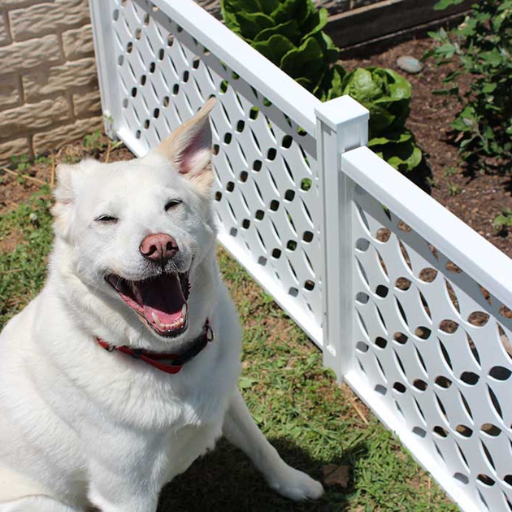
Proper installation of an electric fence is one of the most crucial elements in ensuring the effective functioning of any electric fence. Five techniques to maximize its effectiveness: choose the charger, ground it properly, select sound insulation, keep the fence line clear, and position the wires for your livestock.
Choose the Right Fence Charger
Ensure that the charger you select is suitable for the length of your fence and the type of animals you intend to manage. You may work with a charger that draws an output of just 2-5 joules for smaller systems, but larger systems may require an output of 6 to 10 joules or more. After selecting the appropriate voltage and energy ratings, ensure that they meet your fencing requirements.
Install Proper Grounding Systems
Grounding is one of the most practical elements of an electric fence, as at least three galvanized grounding rods, 6-8 feet tall and spaced 10 feet apart, should be used for optimal results. If the ground is poor, the fence may deliver a very weak shock, thereby reducing the effectiveness of a fine deterrent.
Utilize Quality Insulators
Quality insulators ensure that the electric current passes through the fence wire without leaking to the posts in any way. Select UV-resistant insulators for durability and replace any that have worn out over time.
Regularly Check and Maintain Fence Lines
Inspect foremost for vegetation and debris on the wires as these may cause shorts and also reduce the strength of the shock. Continue to trim grass and weeds near the fence and repair broken or sagging wires.
Position Wires Strategically for Your Livestock
Wire height and spacing must be set according to the type of livestock or wildlife you are containing or deterring; for instance, a single wire at knee height works well for hogs, whereas multi-wire fences serve better for large animals such as cattle or deer.
With the proper techniques and attention to detail, one can install an electric fence system that is both dependable and highly efficient.
How to Bury the Fence for Added Security
Trench Burying
Trenching the wire offers extra protection, especially against animals trying to dig under it or against environmental factors. Thus, here is a general approach to burying the electric fence effectively:
Digging the Trench
Firstly, prepare to dig a trench, 6-12 inches deep, striking the whole length of the fence line where you intend to bury the wire. While a 6-inch trench should discourage smaller wild animals and livestock, trenches that are deeper, up to 12 inches, should be considered where larger diggers, such as coyotes or dogs, might be active.
Wire-Type Selection
The underground electric fence wire should be insulated to avoid grounding problems. Grounding issues typically arise with thinner wire and are therefore usually recommended to use wire of 12 to 14 gauge, which can withstand fairly well buried conditions and prolonged exposure.
Use of Conduit
The best security and longevity come from encasing the wire within a conduit or PVC piping and then burying it. This extra layer provides additional protection from moisture, soil erosion, and potential damage to the wire caused by pests or rodents.
Spacing Guidelines
Ensure that you space the wires you put underground adequately to prevent short circuits. If you need to install more than one line, maintain at least 6 inches of space between them to minimize the risk of electrical interference.
Beware of Moisture and Grounding
Moist environments tend to increase the risk of grounding. When fighting this, try to have the wire fully insulated and avoid burying it in areas where water could potentially pool. Use a strong insulation material to maintain great conductivity.
Considering Money and Time
Burying fence wire implies extra costs for material and labor. Insulated underground wire comes between $0.30 and $0.50 per foot, on average, with more charges for trenchers and conduits.
By following these measures and taking certain precautions, you can maintain the integrity of your electric fencing system, creating a secure boundary that will last for several years.
Using Ground Stakes for Stability
Ground stakes are of utmost importance in any fencing system. They stand under forceful pressure coming through the environment. These stakes ensure that the fence is securely erected, preventing it from shifting and sagging over time. If installed properly, ground stakes significantly increase the structural integrity of your fence.
Key Considerations for Ground Stakes:
Material Selection
Ground stakes are commonly made from steel, wood, or plastic. Steel stakes are considered most durable and resistant to weathering and soil pressure. They recommend especially galvanized steel stakes, which are resistant to rust and corrosion, allowing for a very long life.
Best Depth
Depending on the type of soil and the requirements of the fencing, it is best to drive stakes into the earth at a depth of anything from 24 to 36 inches. Newer information suggests that sandy or loose soils require deeper stakes, anywhere from 36 to 48 inches, to ensure the additional stabilization.
Spacing Guidelines
Correct spacing of stakes will ensure tension and support of the fence. Generally, a fence system is designed to place stakes every 8 to 10 feet. In high-tension fencing, closer placement of stakes is required, anywhere from 6-8 feet apart.
Cost-Efficiency
The cost of ground stakes depends mainly on the material and size. Steel types go at $1 to $4 per stake, while treated wood costs $2 to $3 each. Plastic stakes, which are less durable, are usually more affordable, costing about $1 to $2 per stake.
Installation Tools
A post driver or a sledgehammer is essential in stake installation. For larger projects, it may be worth investing in a powered post driver, costing $100-$250, to reduce labor time.
With proper selection and installation of ground stakes, you can significantly increase the reliability and longevity of your fencing system. When combined with appropriate materials and methods, these anchoring solutions offer significant value in establishing a secure and stable boundary.
Creating Barriers Around Raised Beds
Barriers around raised garden beds serve the purpose of protecting the plants from pests, soil erosion, and other hazards. Depending on your needs, working with a variety of materials and methods can help you build adequate barriers. These are five commonly preferred options:
Wire Mesh Fencing
Effective for keeping out small animals, such as rabbits or rodents.
Usually, galvanized steel is used for long life.
It costs from $20 to $50 per roll, with size and gauge variations.
Wooden Frames
Wooden frames give a nice, sturdy barrier solution.
It can be made from treated wood or wood that is resistant to decay, such as cedar.
Usually $50-$100 per barrier, depending on bed size.
Plastic Garden Fencing
Very light and easy to install, these temporary barriers are ideal for use.
Often UV-protected, so they last longer.
The price is usually $10-$30 per roll.
Plexiglass Panels
Protect from winds and fine-skillful pests; also provide sunlight.
Perfect for garden needs with some nice, clean, modern look.
$30 to $80 per panel.
Rock or Brick Borders
Permanent landscaping, hardwearing, with aesthetic value.
It requires careful and precise placement to remain stable.
The cost of the material can vary; average costs range from $2 to $5 per brick or $70 to $150 for a whole project.
Depending on what your project needs, the budget you have, and the level of protection required for your plants, these options can all be considered.
Frequently Asked Questions (FAQ)
What kind of fence is best for keeping deer out of a garden?
A high garden fence, about 6 feet or more, is really the best way to keep deer away from the garden. Deer can jump amazingly well, so a fence built to that height will deter them quite effectively. Additionally, creating some features so that the deer cannot see over will better deter them.
How can I make a barrier for my garden so small animals cannot get in?
To keep small animals, such as rabbits and groundhogs, away, use either a mesh fence or a wire fence of at least 3 feet in height. Burying 6 to 12 inches of the fence portion deep in the ground will stop the critters from digging under it. For extra protection, you might try chicken wire.
Which types of animals can be deterred by a garden fence?
A proper fence would deter a good number of animals: deer, raccoons, gophers, and pesky rabbits. Choosing what materials to fence in with, and how tall to build should depend on what animals are common in your area. That will all make sure your garden stays protected.
How tall should a fence be made to keep away raccoons?
Four feet tall is the starting point advised for a raccoon deterrent fence. More effectiveness would come out of a much taller one, somewhere around 6 feet, as raccoons are great climbers. A slanted top also aids the fence's effectiveness.
Which fencing materials will keep animals away?
Different styles of fencing each serve well in keeping unwanted animals out. Chainlink fencing, metal wire fences, and mesh fences combine durability and visibility. In an effort to do some beautification, wooden fences can also keep the unwanted out with the proper height and maintenance.
Can I put up a fence and gate for my vegetable garden?
For sure! A fence is nice for the vegetable garden. Be sure to close your gate tightly, and ensure that your fence design will not allow critters easy access to your garden area. Latches that little critters can't reach would also help keep the area secure.
How can I keep animals from digging under the fence?
Another way to keep animals from digging under the fence is to bury the bottom of the fence in a trench at least 6 inches to 1 foot deep. Alternatively, lay wire mesh flat along the ground at the base of the fence, creating a difficult barrier for digging critters to get through.
What is an electric fence and how can such a fence keep animals out?
An electric fence is a system that delivers a shock once touched. This makes it a neat trick for keeping the big critters like deer and any raccoons from entering your garden. An electric fence properly installed for your garden will also open up the view while giving in yet another layer of protection.
What are barrier fences, and what are they used for to safeguard gardens?
Barrier fences serve to restrict animals from gaining entry to a garden by providing a solid obstruction. They can be constructed from any number of materials ranging from wood and metal to plastic. In essence, by erecting a barrier fence around the perimeter of your garden, deer and other large animals will be stymied in their attempts to gain access to your plants.
Tags: garden fence ideas to keep animals out


